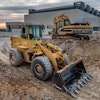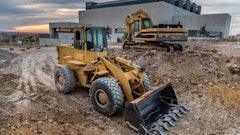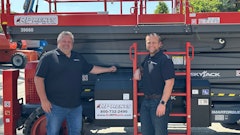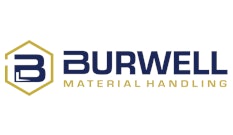For more than 30 years I’ve talked to contractors about their business-improvement projects – everything from changing diesel-fuel vendors to implementing new estimating software – and the hardest part in changing company processes often seems to be recognizing when a long-held practice is no longer the best option.
That’s why when I heard that Johnson & Galyon, Knoxville, Tenn.’s, leading medical-facility general contractor had traded in its equipment fleet to rent virtually all of the machines the company uses, I wanted to dig into how that decision came about.
Johnson & Galyon is a 108-year-old business with a broad portfolio of vertical construction business in East Tennessee. They’d owned and operated a fleet of lifts and telehandlers, skid steers and 40-some-odd different types of equipment – enough to power about 25% of their peak demand – for a long time. They had machines that needed to be replaced and today’s options were so much more sophisticated that investing in mechanic training and more sophisticated fleet management seemed necessary to continue offering clients market-beating rates.
At the same time, finding new people to hire and add Johnson & Galyon’s stable crew of high-quality workers had been getting more difficult, as it has for so many contractors. Company management began pondering whether managing equipment is where the GC wanted to invest human resources.
“I firmly believe that for everything you do, someone needs to own that process. We didn’t have an owner of equipment management,” says CEO Doug Kennedy.
Equipment breakdowns and idle machines lingering on sites underscored the need for somebody to keep a closer watch over deployed assets.
As they considered the situation, a significant change in the East Tennessee construction economy came into view: the proliferation of equipment rental competitors. Their representatives stopped in to sites and wooed project managers with promises to beat anybody’s prices. Field supervisors were renting equipment to meet peak job demand, and what manifested as an accounting hassle also started to look like an opportunity to J&G. Here were clear options to investing in new equipment, people and facilities to manage it.
Check out the video to find out more about what brought about a significant improvement in equipment performance on Johnson & Galyon and how rental revolutionized project equipment cost control.














![Herc 5745c08a34274 1 65ce4101dd187[1]](https://img.forconstructionpros.com/mindful/acbm/workspaces/default/uploads/2025/06/herc5745c08a34274-1-65ce4101dd1871.UqeKvSiS04.png?ar=16%3A9&auto=format%2Ccompress&bg=fff&fill-color=fff&fit=fill&h=135&q=70&w=240)





